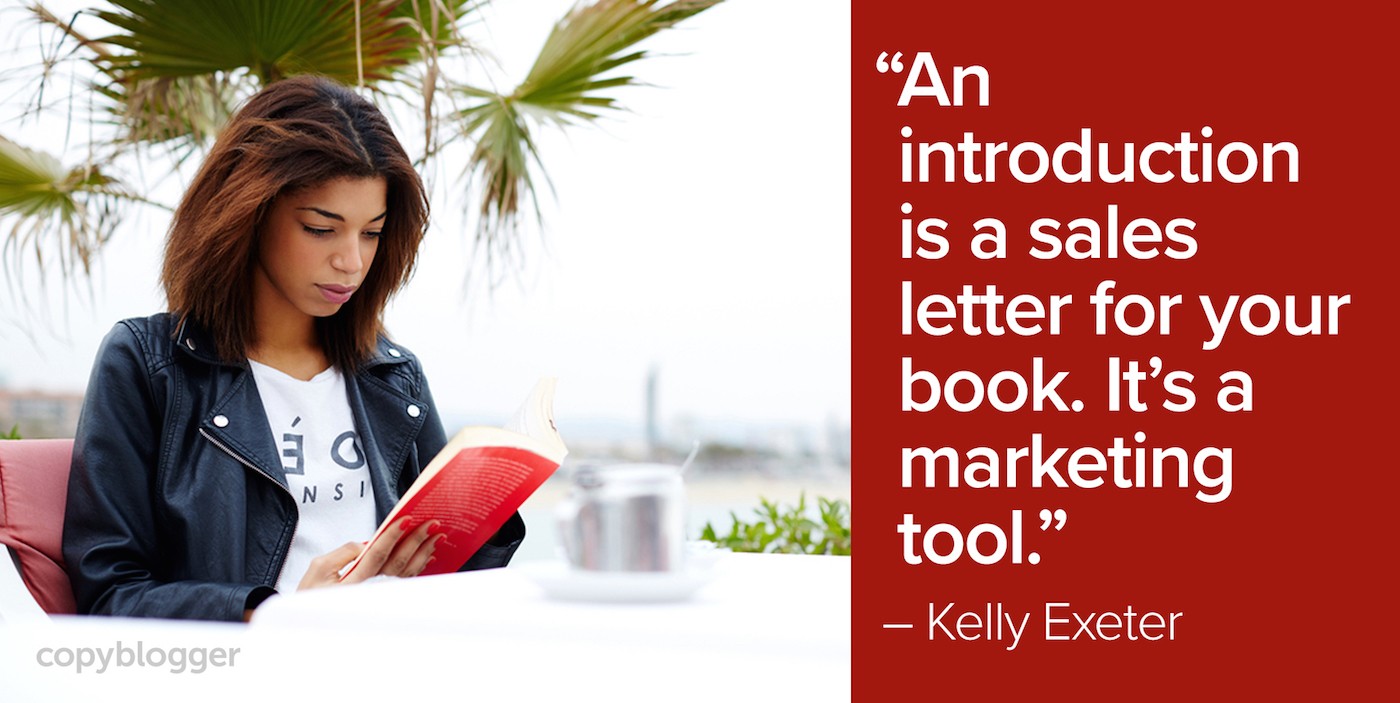The introduction. Every time they try to elegantly link their title and chapter content with a coherent and engaging introduction, they hit the wall. With three steps you can: Instantly engage your ideal reader Give them certainty that Yes, this book is for them Expand on the promise in your book’s title Tell the reader why you’re the person to deliver on that promise Indicate how you plan to do so But first, you need to remember one key thing: An introduction is a sales letter for your book. You’ll know you’ve gotten the beginning of your introduction right if: It combines with the title of your book to make a strong promise to the reader. (For example, the title and opening of The Power of Habit combine to make this promise: “This book will help you form positive, long-lasting habits that will make your life better.”) You’ve assured the reader you “get them” by demonstrating an understanding of “what is.” You’ve inspired and/or excited the reader by giving them a hint of “what could be.” Now it’s time for … Step# 2: Show the reader why they should listen to you Once the reader is hooked on the promise you’re making, and confident your book is for them, they want to know: Who are you? Some readers are keen to read the experiences of people who are at the same place in life as them. Here’s how Duhigg outlines The Power of Habit: “This book is divided into three parts. The first section focuses on how habits emerge within individual lives … The second part examines the habits of successful companies and organizations … The third part looks at the habits of societies … Each chapter revolves around a central argument: Habits can be changed, if we understand how they work.” This section of your introduction acts as a roadmap for the reader. That’s why your book’s introduction is effectively a sales page for your book. The content will address your reader’s objections and questions: Is this book relevant to my personal situation?

It might be a short ebook you intend to give away to blog subscribers.
Or you might be trying to pen a New York Times bestseller.
Either way, I think I know which bit of your book is causing you problems.
The introduction.
It’s the biggest hurdle for most of the writers I work with. Every time they try to elegantly link their title and chapter content with a coherent and engaging introduction, they hit the wall.
The good news is, it only takes three steps to knock down that wall.
With three steps you can:
- Instantly engage your ideal reader
- Give them certainty that Yes, this book is for them
- Expand on the promise in your book’s title
- Tell the reader why you’re the person to deliver on that promise
- Indicate how you plan to do so
But first, you need to remember one key thing:
An introduction is a sales letter for your book. It’s a marketing tool.
So, as tempting as it might be to write an introduction that tries to capture the attention of “everyone,” it’s a bad idea. As noted above, it must be pitched to — and engage — your ideal reader.
I’m going to assume you know exactly who your ideal reader is.
Which means you’re ready to implement the three steps that will deliver an engaging and effective book introduction.
Step# 1: Hook the reader with a story
The human brain is hard-wired for story. Any information provided in that format instantly activates two compelling questions in our minds:
- What happens next?
- What’s in this for me?
Once those questions are raised, we’re hooked; we can’t help but keep reading to find out the answers.
However, you can’t start your book’s introduction with just any story.
You’ll get better results if you include elements of “what is” and “what could be,” which are part of Nancy Duarte’s techniques for effective storytelling in presentations.
Your story must connect to your book’s title and communicate:
- “What is”: a current, non-ideal situation the ideal reader strongly identifies with
- “What could be”: the better situation the reader will be able to access, presumably as a result of reading your book
Check out the opening of Charles Duhigg’s The Power of Habit:
“She was the scientists’ favorite participant.
Lisa Allen, according to her file, was thirty-four years old, had started smoking and drinking when she was sixteen, and had struggled with obesity for most of her life. At one point, in her mid-twenties, collection agencies were hounding her to recover $10,000 in debts. An old résumé listed her longest job as lasting less than a year.
The woman in front of the researchers today, however, was lean and vibrant, with the toned legs of a runner …
According to the most recent report in her file, Lisa had no outstanding debts, didn’t drink, and was in her thirty-ninth month at a graphic design firm.”
If you’ve picked up The Power of Habit, it’s likely you’re someone who’s struggled to create and maintain good habits.
By the third paragraph of this book, you’re hooked. Duhigg has shown you “what is,” (Lisa Allen had many struggles), and “what could be,” (Lisa has managed to overcome those struggles).
Duhigg’s intention is clear: This book will help you be like Lisa.
Not all opening stories are able to convey both “what is” and “what could be” as explicitly as Duhigg’s does. Sometimes the “what could be” is implied, as in the opening to Gretchen Rubin’s The Happiness Project:
“One April…

COMMENTS